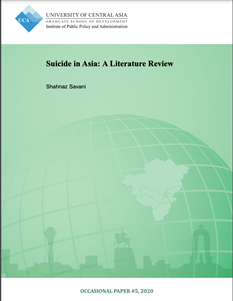Suicide in Asia: A Literature Review
Abstract
Suicide is a serious and complex global problem. About 1.5 million people die by suicide each year, and approximately one billion people are affected by it. Although most suicides occur in the low and middle-income countries of the world, research on suicides largely comes from upper-middle-income and high-income countries (Bantjes et al., 2016). Suicide varies around the globe due to factors relating to culture, context, and environment. There are striking differences in the appearance of suicide between the world’s richer and poorer countries. The meaning and significance of suicide, the causes of suicide, and the risk and protective factors for suicide are uniquely embedded in the cultural and religious contexts of different geographical regions. Although much literature on suicide in Asia has emerged in the last decade, suicide in Central Asia (comprised of Kazakhstan, Kyrgyzstan, Tajikistan, Turkmenistan, and Uzbekistan) is poorly researched. Little is known about prevalence data, risk and protective factors, and effective treatments in this region. To develop effective prevention and intervention strategies for the phenomenon of suicide, it has to be studied within its own socio-cultural context. This paper attempts to provide an overview of the literature on suicide, prevalence trends by age, gender and economic status, and the common risk factors associated with suicide in Asia, focusing specifically on Central Asia.








